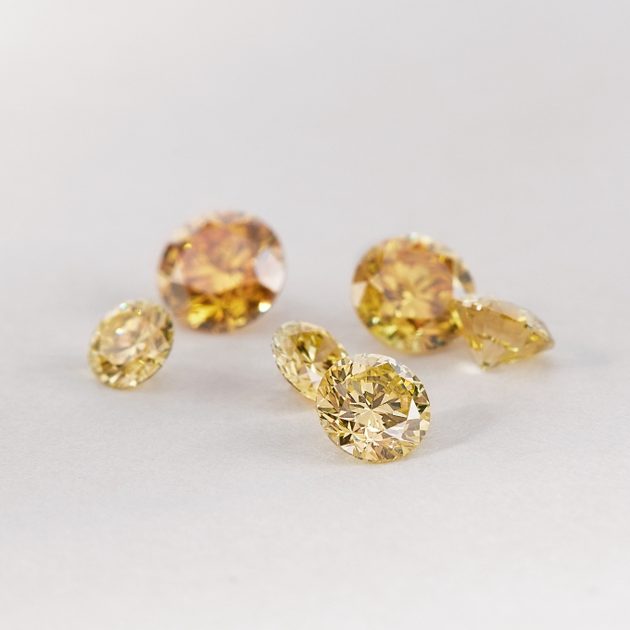Welcome to Facts Vibes! Discover the mesmerizing world of diamonds with us. Unearth fascinating facts about these precious gemstones, from their formation deep within the Earth to their renowned allure. Delve into the brilliance of diamonds and explore their enduring symbolism.
Dazzling Diamonds: Unveiling Fascinating Facts
Dazzling Diamonds: Unveiling Fascinating Facts
Diamonds have fascinated humans for centuries, and it’s no wonder why. These precious gemstones are not only stunningly beautiful but also hold a wealth of fascinating facts that make them truly unique.
One of the most intriguing aspects of diamonds is their formation. These dazzling gems are created deep within the Earth’s mantle, where intense heat and pressure transform carbon into the crystalline structure we know as diamond. This process takes millions of years, making each diamond a remarkable product of time itself.
In addition to their natural formation, diamonds also boast remarkable physical properties. They are the hardest natural substance known to man, ranking 10 on the Mohs scale of mineral hardness. This incredible hardness makes diamonds highly resistant to scratching, further adding to their enduring allure.
Furthermore, diamonds have a long history of symbolism and cultural significance. They have been associated with love, wealth, and power in many societies throughout history, adding an extra layer of fascination to these already captivating gemstones.
In conclusion, the world of diamonds is filled with intriguing facts that continue to captivate and inspire people around the globe. Their formation, physical properties, and cultural significance all contribute to the enduring mystique of these dazzling gemstones.
Most popular facts
Diamonds are the hardest natural substance on Earth.
True, diamonds are the hardest natural substance on Earth.
They are formed deep within the Earth’s mantle under high pressure and temperature.
They are formed deep within the Earth’s mantle under high pressure and temperature.
The largest diamond ever discovered is the Cullinan diamond, weighing 3,106 carats.
The largest diamond ever discovered is the Cullinan diamond, weighing 3,106 carats.
Diamonds are composed of carbon atoms arranged in a crystal lattice structure.
Diamonds are composed of carbon atoms arranged in a crystal lattice structure.
The word “diamond” is derived from the Greek word “adamas,” meaning invincible or indestructible.
The word “diamond” is derived from the Greek word “adamas,” meaning invincible or indestructible.
The first recorded history of diamonds dates back to India in the 4th century BC.
The first recorded history of diamonds dates back to India in the 4th century BC.
Diamonds are often associated with love and commitment, making them a popular choice for engagement rings.
Diamonds are popular for engagement rings due to their association with love and commitment.
The diamond industry is a significant contributor to the economies of countries such as Botswana, Russia, and Canada.
Yes, the diamond industry is a significant contributor to the economies of countries such as Botswana, Russia, and Canada.
Diamonds can come in various colors, including white, yellow, blue, pink, and red.
Diamonds can come in various colors, including white, yellow, blue, pink, and red.
The value of a diamond is determined by the combination of its cut, clarity, color, and carat weight, known as the 4Cs.
The value of a diamond is determined by the combination of its cut, clarity, color, and carat weight, known as the 4Cs.
Synthetic diamonds can be produced in laboratories and have identical physical and chemical properties to natural diamonds.
Yes, synthetic diamonds can have identical physical and chemical properties to natural diamonds since they are produced in laboratories.
The Hope Diamond, a famous blue diamond, is believed to be cursed and is housed in the Smithsonian National Museum of Natural History.
The Hope Diamond, a famous blue diamond, is believed to be cursed and is housed in the Smithsonian National Museum of Natural History.
Diamonds have industrial uses, such as in cutting, grinding, and drilling due to their hardness.
Diamonds have industrial uses, such as in cutting, grinding, and drilling due to their hardness.
The diamond trade has been associated with conflicts in certain regions, leading to the implementation of the Kimberley Process to prevent the sale of “conflict diamonds.”
The diamond trade has been associated with conflicts in certain regions, leading to the implementation of the Kimberley Process to prevent the sale of “conflict diamonds.”
The tradition of giving a diamond ring as an engagement symbol was popularized by a marketing campaign by De Beers in the mid-20th century.
Yes, the tradition of giving a diamond ring as an engagement symbol was popularized by a marketing campaign by De Beers in the mid-20th century.
In conclusion, the intriguing and timeless allure of diamonds, coupled with their fascinating geological formation and significant cultural symbolism, solidifies their status as a beloved and prized gemstone in the world of jewelry and beyond. Understanding the undisputed facts about diamonds enriches our appreciation for these remarkable gems and the multifaceted impact they have on our lives.
